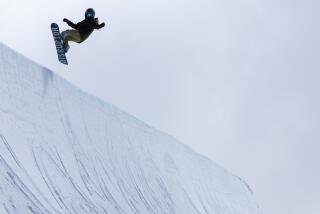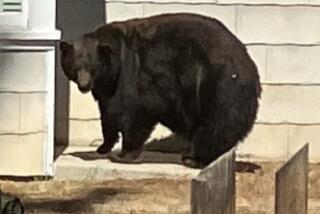Tree stands, not drunken gun-wielders, are the greatest threat to hunters
The common perception is that the greatest threat to hunters is being shot by other hunters who have had a bit too much to drink, but a new study by researchers at the Ohio State University Medical Center suggests that trees are actually a much greater danger. Or falling out of them, that is.
Dr. Charles H. Cook, a trauma surgeon at the university, and his colleagues undertook the study because their own experiences suggested that guns and alcohol were not involved in the majority of hunting accidents. They collected data from the two Level 1 trauma centers in Columbus, where the most serious accident victims are treated, over a 10-year period, accumulating data on 130 patients who suffered hunting-related injuries. Alcohol was inolved in only 2.3% of the injuries and drug abuse in 4.6%.
Sixty-five of the injuries were falls, and 60 of those were falls from tree stands, where hunters would stand or sit in wait for deer or other prey. Of those victims, 59% suffered fractures and 47% experienced lower-extremity fractures; 18% suffered injuries to their heads. Surgery was required for 81% of the fall-related injuries and 8.2% of the victims suffered permanent neurological damage. Of the other falls, four were from ground level and one was from an elevated outhouse.
The severity of the damage is not surprising, Cook noted, because an “optimally” placed tree stand is 10 feet to 30 feet in the air and a body falling from such heights can reach speeds of more than 30 mph. The impact, furthermore, often occurs on hard surfaces, such as logs or parts of hunting equipment. “Cold air, fatigue, darkness and early morning hours, combined with the fact that tree stands are very small and most of the hunters were not wearing safety harnesses, I believe, all contributed to their falls,” Cook said in a statement.
Other injuries included 10 from crashes involving all-terrain vehicles, five arrow wounds, three injuries from falling branches -- those trees again -- three burns, two wounds from assaults, one self-inflicted stab wound, one bicycle crash and two wounds inflicted by prey.
Cook noted that the results may not be readily extrapolated to California and the West, where the use of tree stands to track prey is much less common because of the vast plains, open fields and mountainous terrain.
Gunshot wounds accounted for 29% of the injuries, and 58% of those were accideentally self-inflicted.
More to Read
Sign up for Essential California
The most important California stories and recommendations in your inbox every morning.
You may occasionally receive promotional content from the Los Angeles Times.









